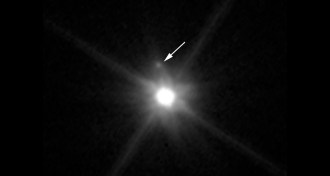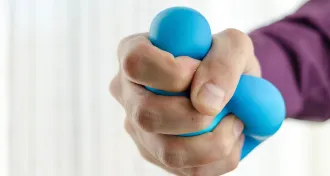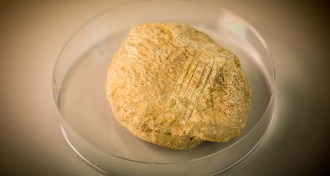All Stories
-
 Neuroscience
NeuroscienceWords’ meanings mapped in the brain
Language isn’t just confined to one region of the brain: The meaning of words spark activity all over the cerebral cortex.
By Meghan Rosen -
 Planetary Science
Planetary ScienceTiny moon orbits dwarf planet
Hubble Space Telescope images from April 2015 show that the dwarf planet Makemake has a tiny moon.
-
 Planetary Science
Planetary ScienceHubble telescope finds small moon orbiting dwarf planet Makemake
Hubble Space Telescope images from April 2015 show that the dwarf planet Makemake has a tiny moon.
-
 Animals
AnimalsHow animal poop could be key in solving echidna mystery
The western long-beaked echidna hasn’t been seen in Australia in 10,000 years. But DNA in scat could reveal its presence.
-
 Paleontology
PaleontologyBeetle saved in amber had helicopter wings
For the first time, scientists report the fossilized remains of two tiny Jacobson’s Beetles, preserved in amber for at least 37 million years.
By Meghan Rosen -
 Science & Society
Science & SocietyFindings on wobbly memories questioned
In contrast to older studies, new results suggest that new memories don’t interfere with older, similar ones.
-
 Plants
PlantsPlants might remember with prions
A plant protein has passed lab tests for prionlike powers as molecular memory.
By Susan Milius -
 Plants
PlantsPrions may help plants remember
A plant protein has passed lab tests for prionlike powers as molecular memory.
By Susan Milius -
 Life
LifeUncertainty is stressful, but that’s not always a bad thing
Life is full of stressful, ambiguous situations. But a new study shows that the ones we can predict stress us out less, and may even help us learn.
-
 Archaeology
ArchaeologyBear bone rewrites human history in Ireland
A rediscovered bear bone puts humans in Ireland at least 12,600 years ago.
By Bruce Bower -
 Astronomy
AstronomyGas blasts from black holes show surprising alignment
Unexpected alignment of galactic gas geysers might offer new insight into how galaxies and black holes arise from the cosmic web.
-
 Life
LifeBacteria use cool trick to make ice
By reordering nearby water molecules, Pseudomonas syringae bacteria can make ice.